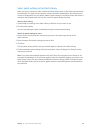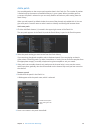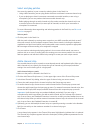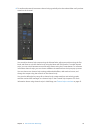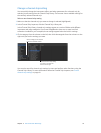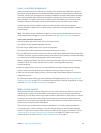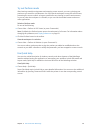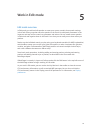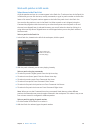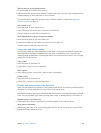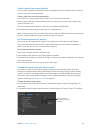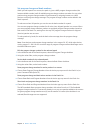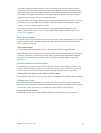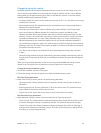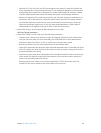37
Edit mode overview
In Edit mode, you add and edit patches to create your custom sounds, choose patch settings
in the Patch Library, organize and select patches in the Patch List, edit patch parameters in the
Inspector, and map screen controls to parameters and actions. You can create custom patches
in Edit mode and organize them in the Patch List so that you can easily access them when you
perform.
Patches are the individual sounds you play using your keyboard controller (for MIDI keyboardists)
and the eects setups you use with your guitar, microphone, or other instrument (for guitarists,
vocalists, and other instrumentalists). MainStage patches can contain multiple channel strips,
each with a dierent instrument or eects setup.
Some basic patch operations, including adding and naming patches, selecting and naming
patches, and adding channel strips to patches, are described in the Get started with
MainStage chapter.
If MainStage is currently in Layout or Perform mode, click the Edit button in the top-left corner of
the MainStage window to begin working in Edit mode.
As you work in Edit mode, you can use the Activity Monitor in the toolbar to view the current
CPU and memory information as well as received MIDI messages. You can show or hide the
CPU and memory meters in the Display pane of MS preferences. For information, see Display
preferences.
Work in Edit mode
5



